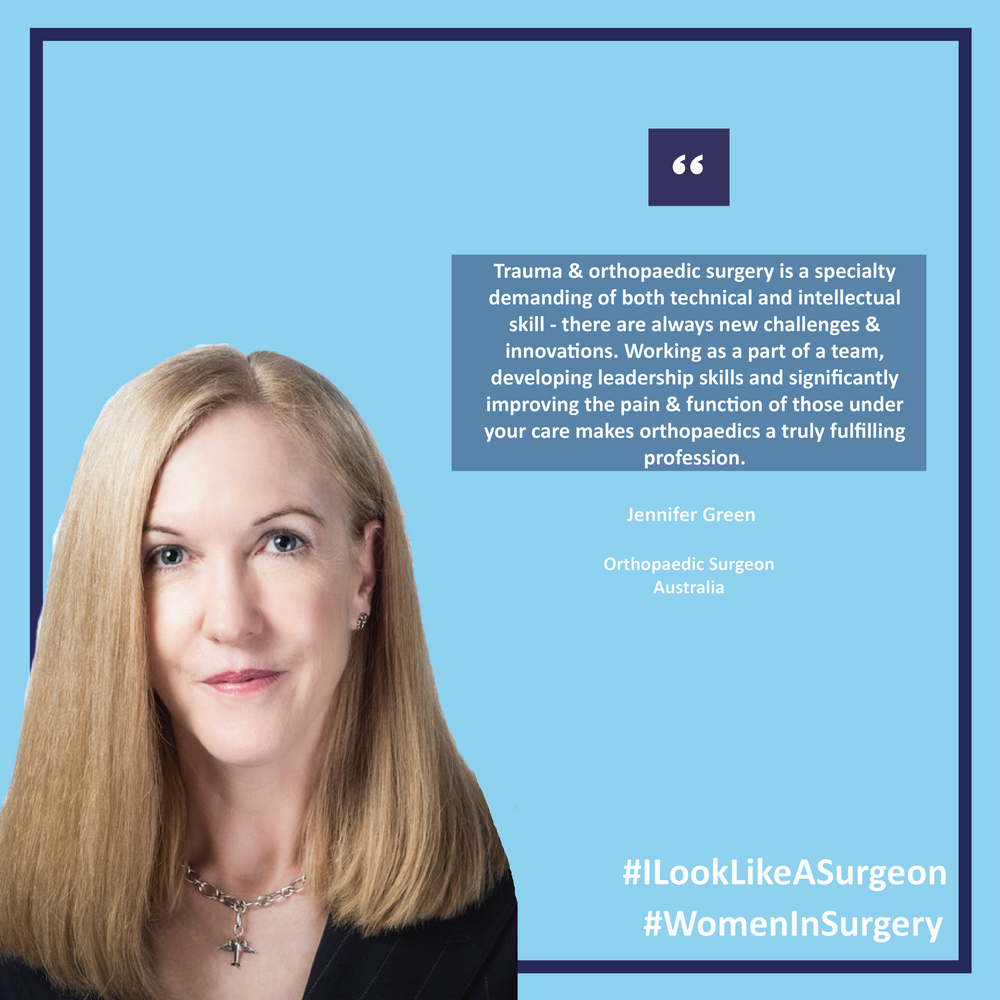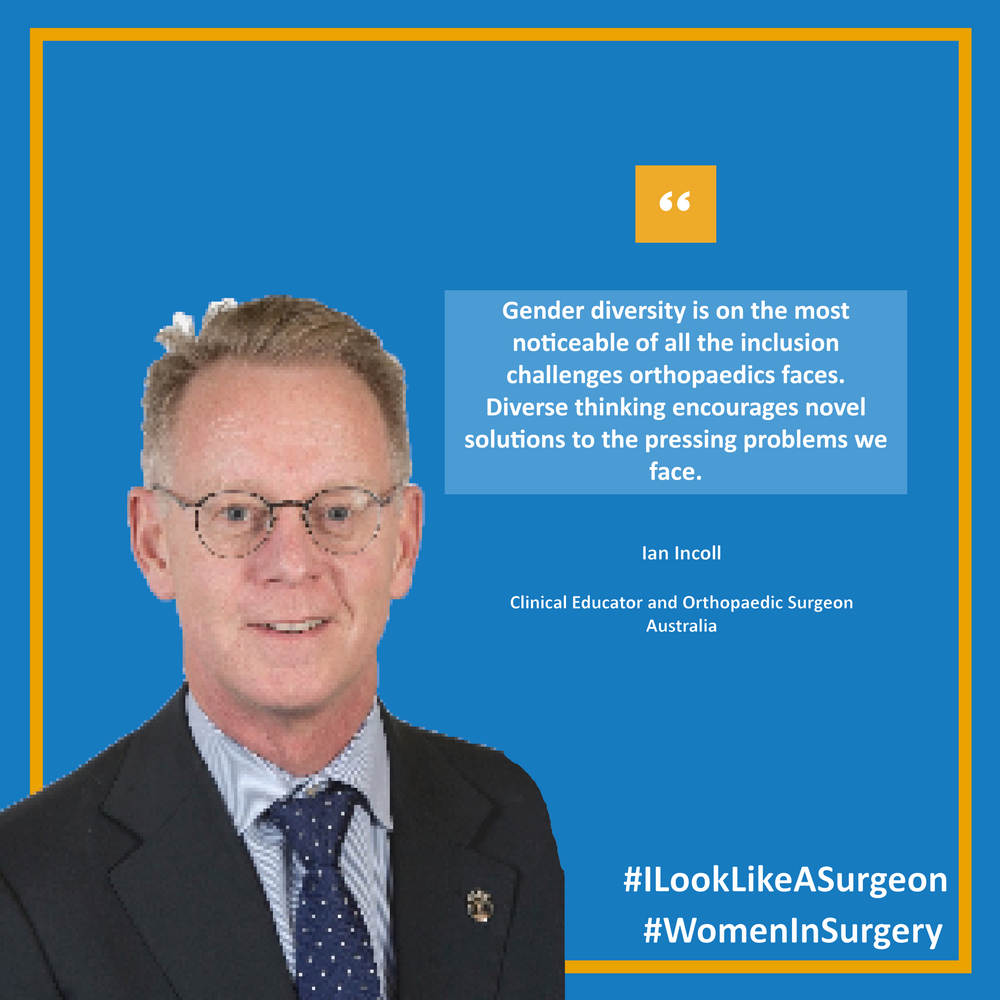Australian Gender Diversity in Orthopaedic Surgery
By Jennifer Green and Ian W. Incoll
The Australian Orthopaedic Association (AOA) is the peak body representing 98% of Australian orthopaedic surgeons and provides training for all Australian orthopaedic trainees. In 2019, 4.8% (57) of the 1,191 active Australian orthopaedic surgeons and 14.9% (35) of 235 trainees were female. In 2018 the AOA established a Diversity Strategy to address the persisting lack of gender diversity in orthopaedics, despite a majority of female Australian medical school graduates in the last two decades. (AOA Diversity Strategic Plan 2018-2023).
The three core strategies address culture & leadership, advocacy & engagement, and flexibility. The key AOA initiatives have included:
- Supporting women into leadership roles – the AOA Board is now 40% female;
- Advertising all AOA Committee roles – 20% female AOA members have taken on a new role in the past 12 months;
- Actively seeking representation of females at AOA scientific and educational meetings, and policies to increase the inclusion of females in scientific meetings;
- Providing childcare & breastfeeding facilities at all AOA scientific and educational meetings;
- Implementing a new, more flexible, competency-based training program - ‘AOA 21’;
- Engaging 150 female medical students & junior doctors in three AOA orthopaedic ‘experience’ workshops, with three more planned in 2020;
- Forming an AOA “Champions of Change” working group with a prominent male diversity advocate from each state, representing diversity interests at state AOA and regional training committees;
- Promoting women in orthopaedics through active social media profiles and;
- Publishing a quarterly member newsletter with contributions promoting diversity and inclusion
The Australian Orthopaedic Association (AOA) has also undertaken an examination of its selection methodology and assessment tools from the perspective of gender differences (female and male only). Over 13 years, selection scoring using curriculum vitae and referee reports demonstrated a difference favouring male applicants. Multiple mini interviews (MMI) did not demonstrate a difference, which has led to an increased emphasis on MMI for current and future selection.
The new Australian orthopaedic surgery training curriculum, ‘AOA 21’, has introduced significant technology enhancements allowing capture and analysis of workplace-based assessment (WBA), elogbook and brief ‘feedback’ episodes. Each aspect has demonstrated gender differences. WBAs (0ver 11,000 interactions) have shown a higher level of entrustment for male trainees, as assessed by both genders of supervisor. Feedback interactions (over 7,500) show female trainees have a higher proportion of ‘needs improvement’, and this finding is also independent of the gender of the supervisor. The eLogbook procedures (over 220,000) indicate more assisting and less graded responsibility for female trainees, although this does improve with the trainee’s progression through the program.


